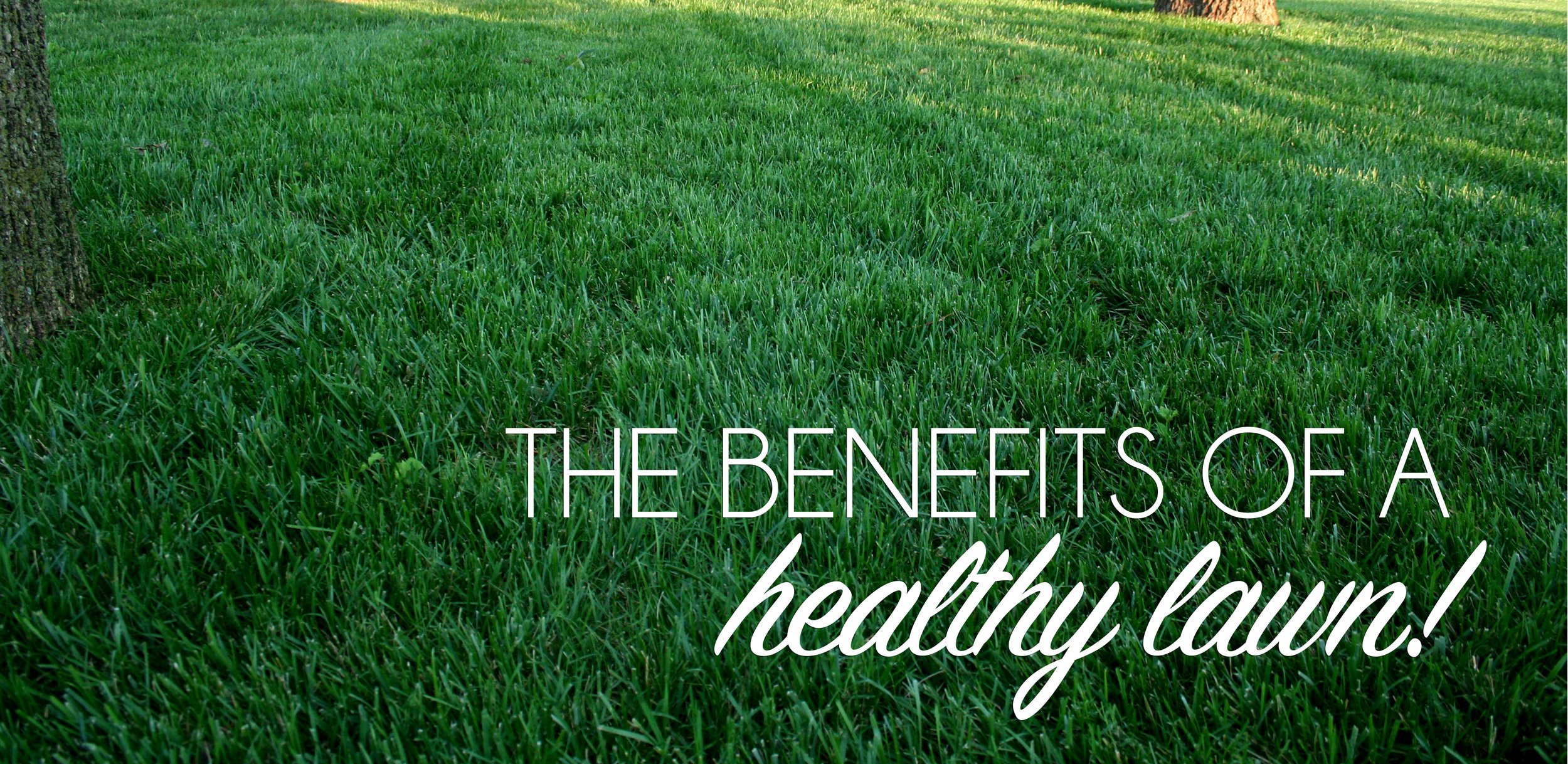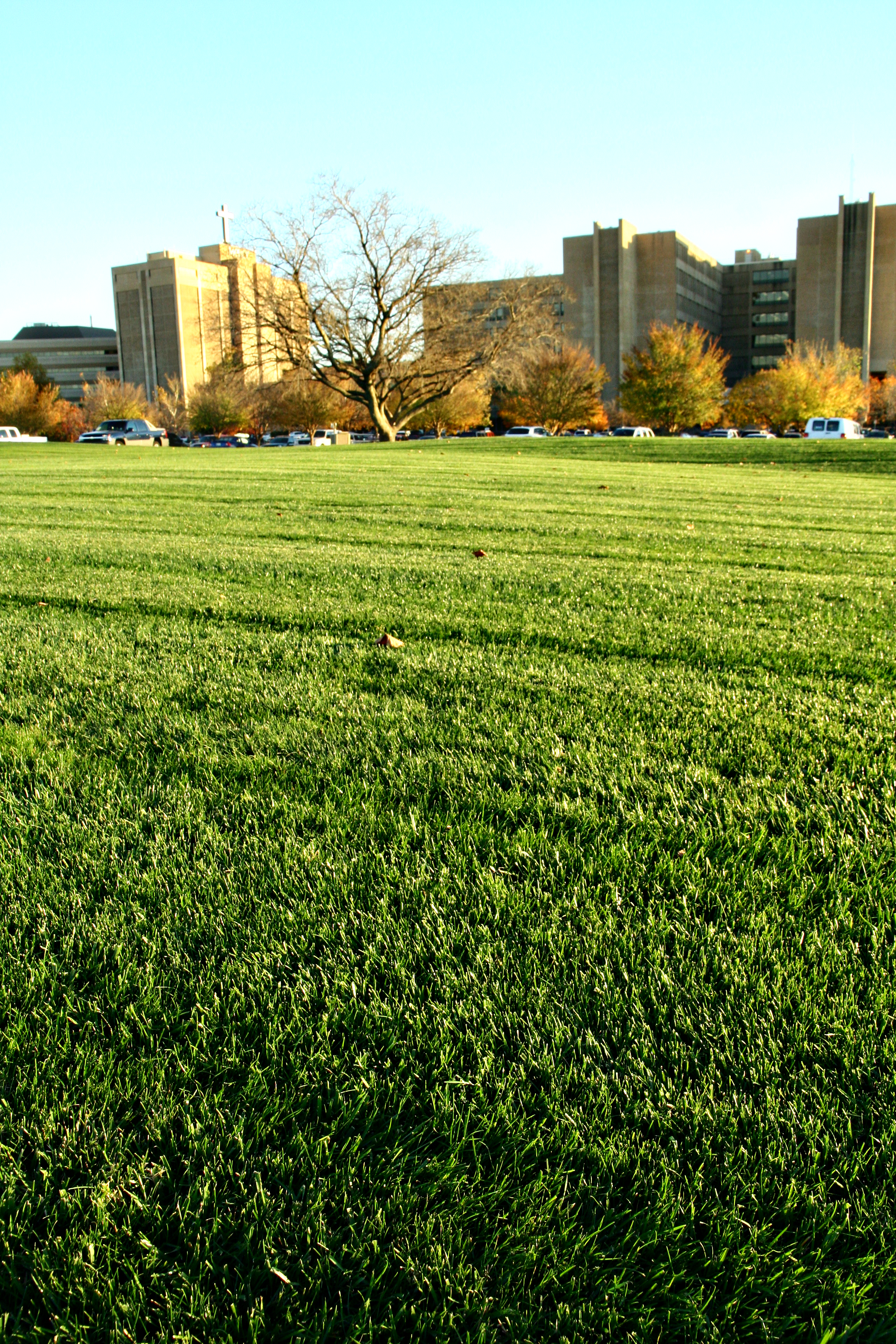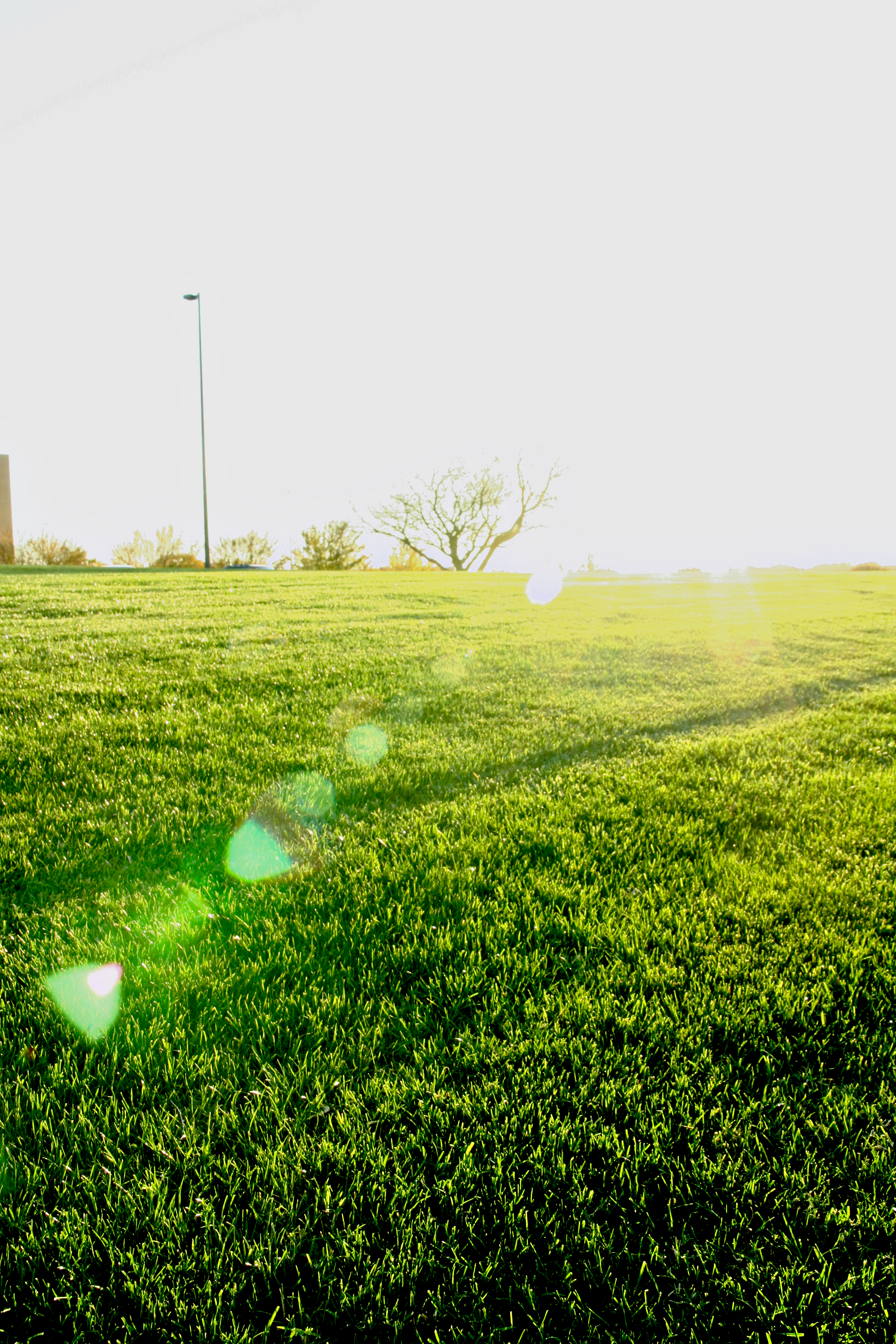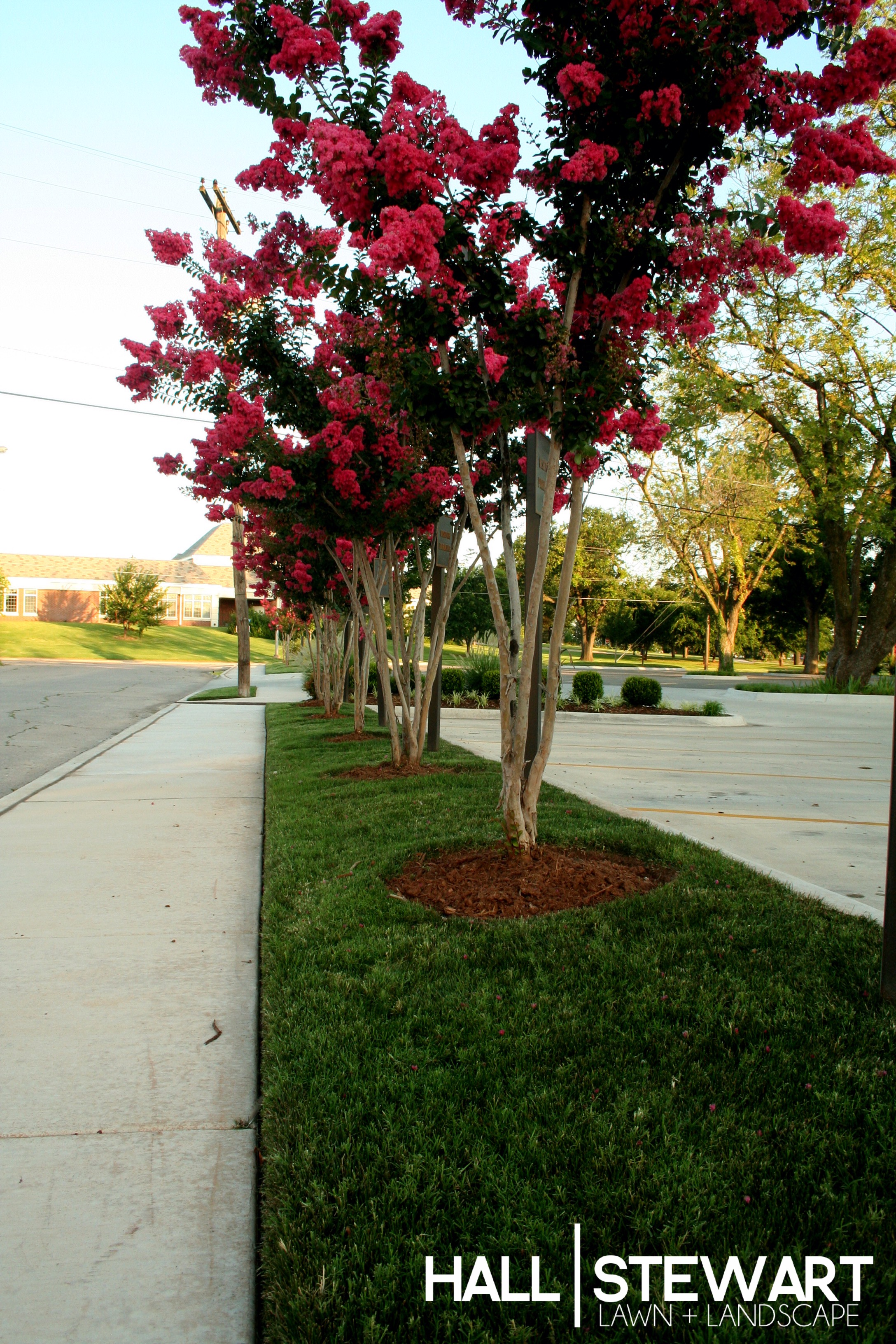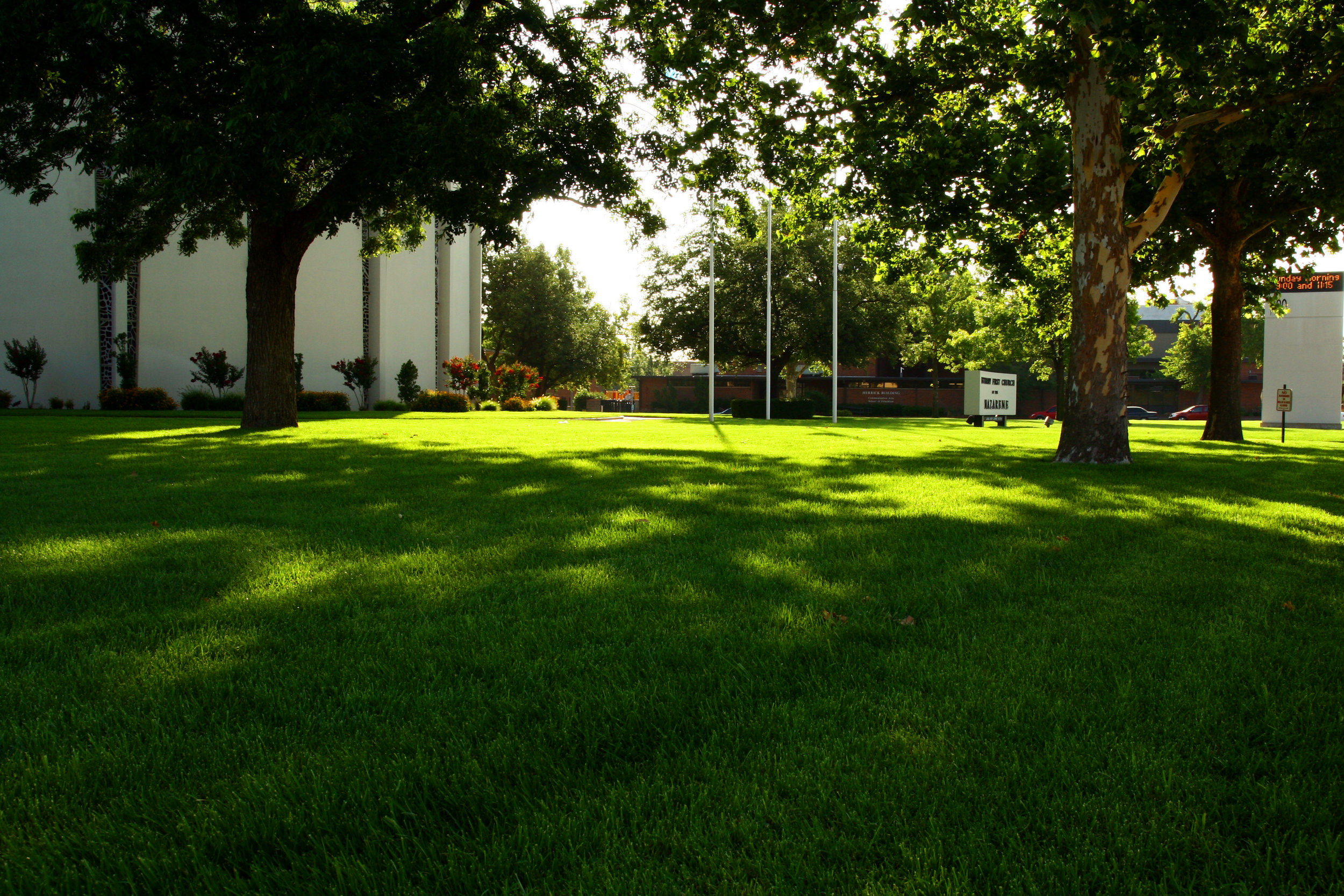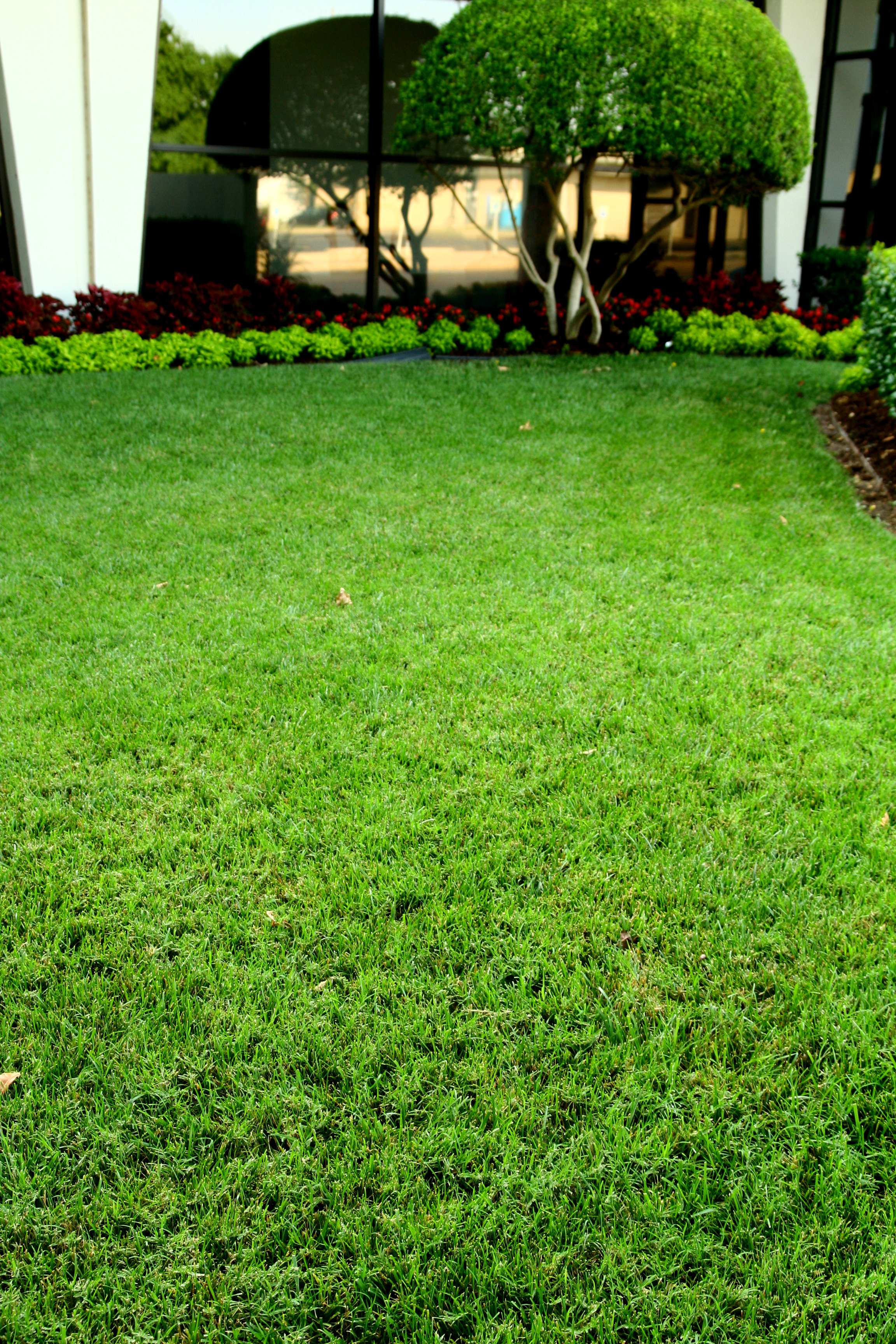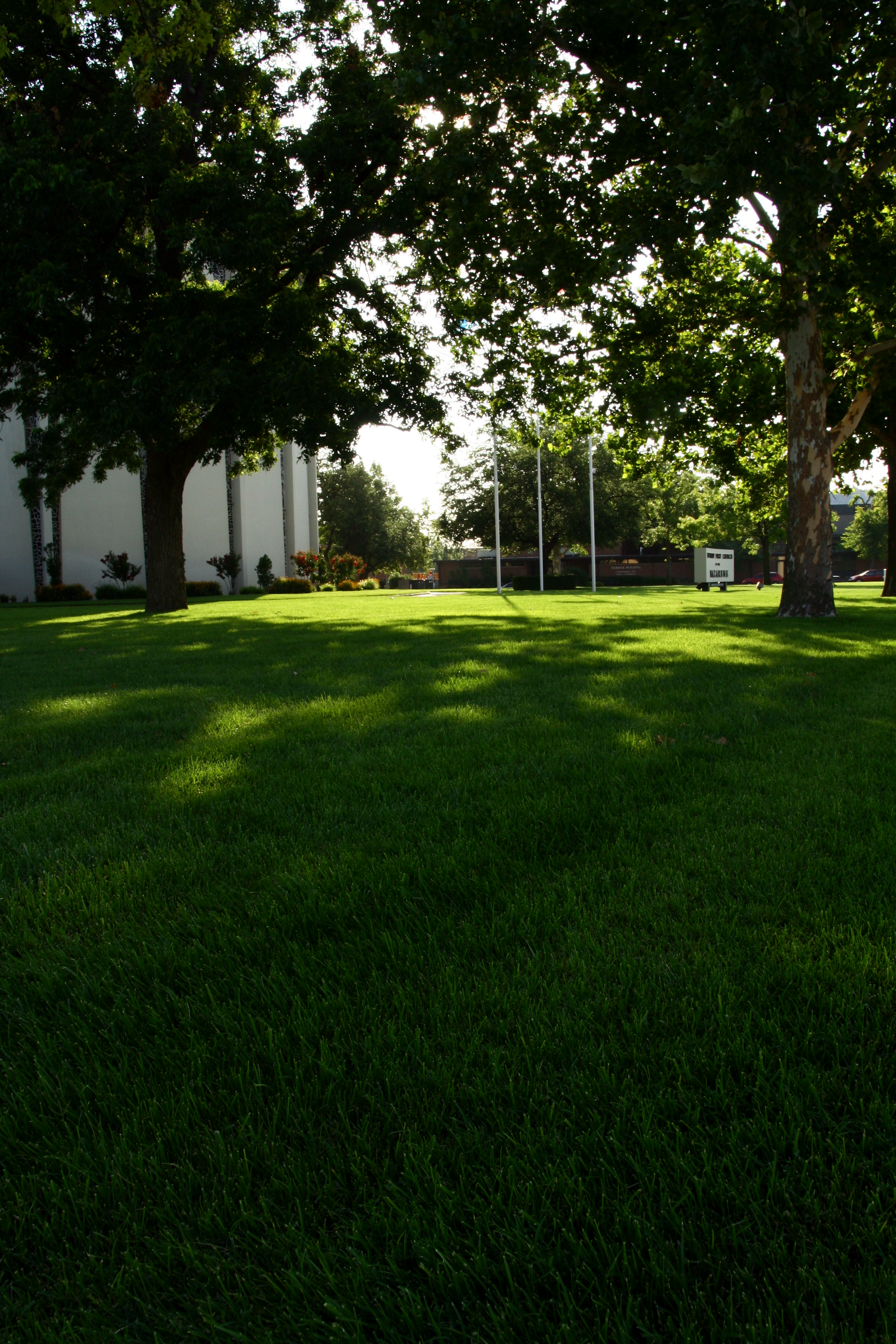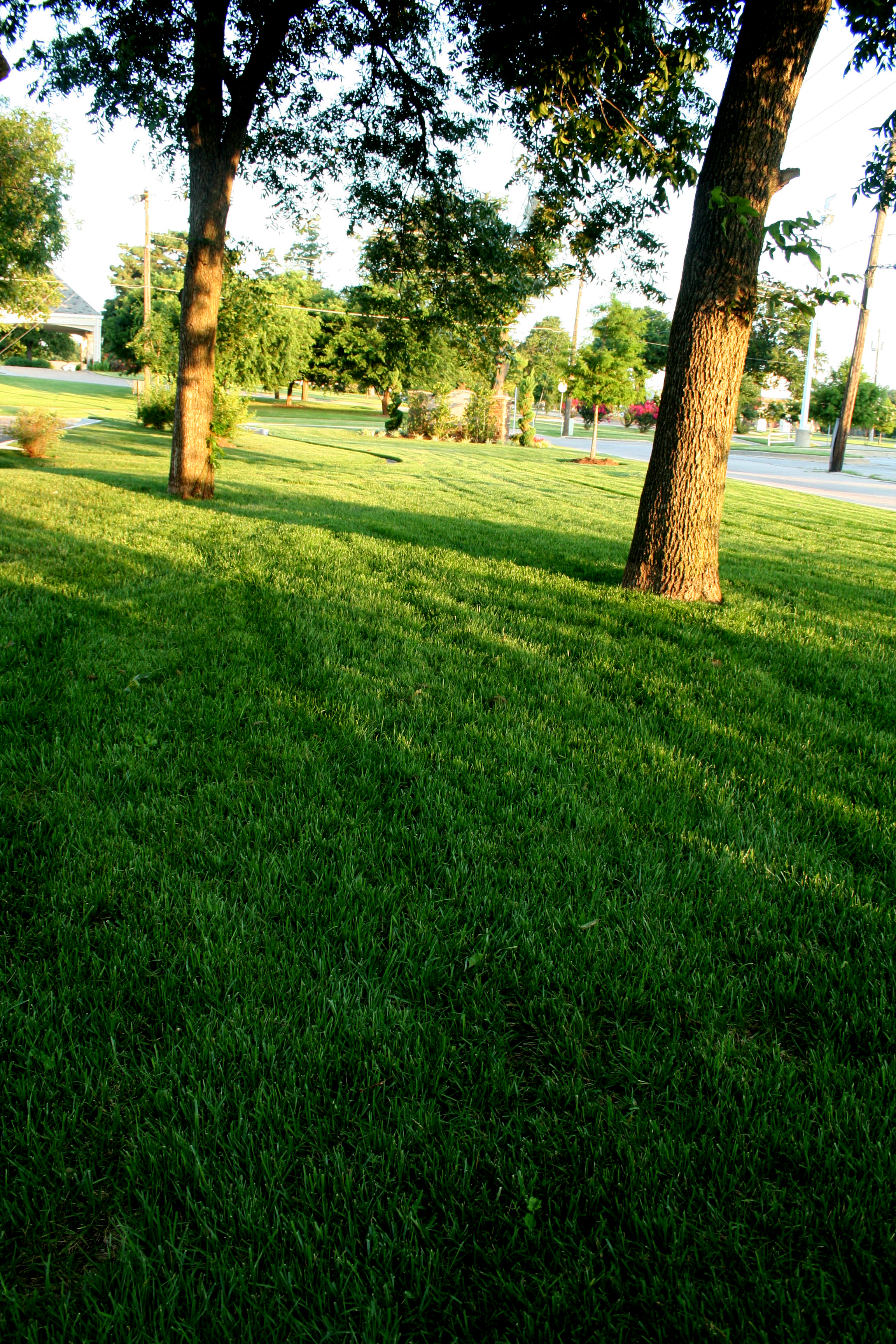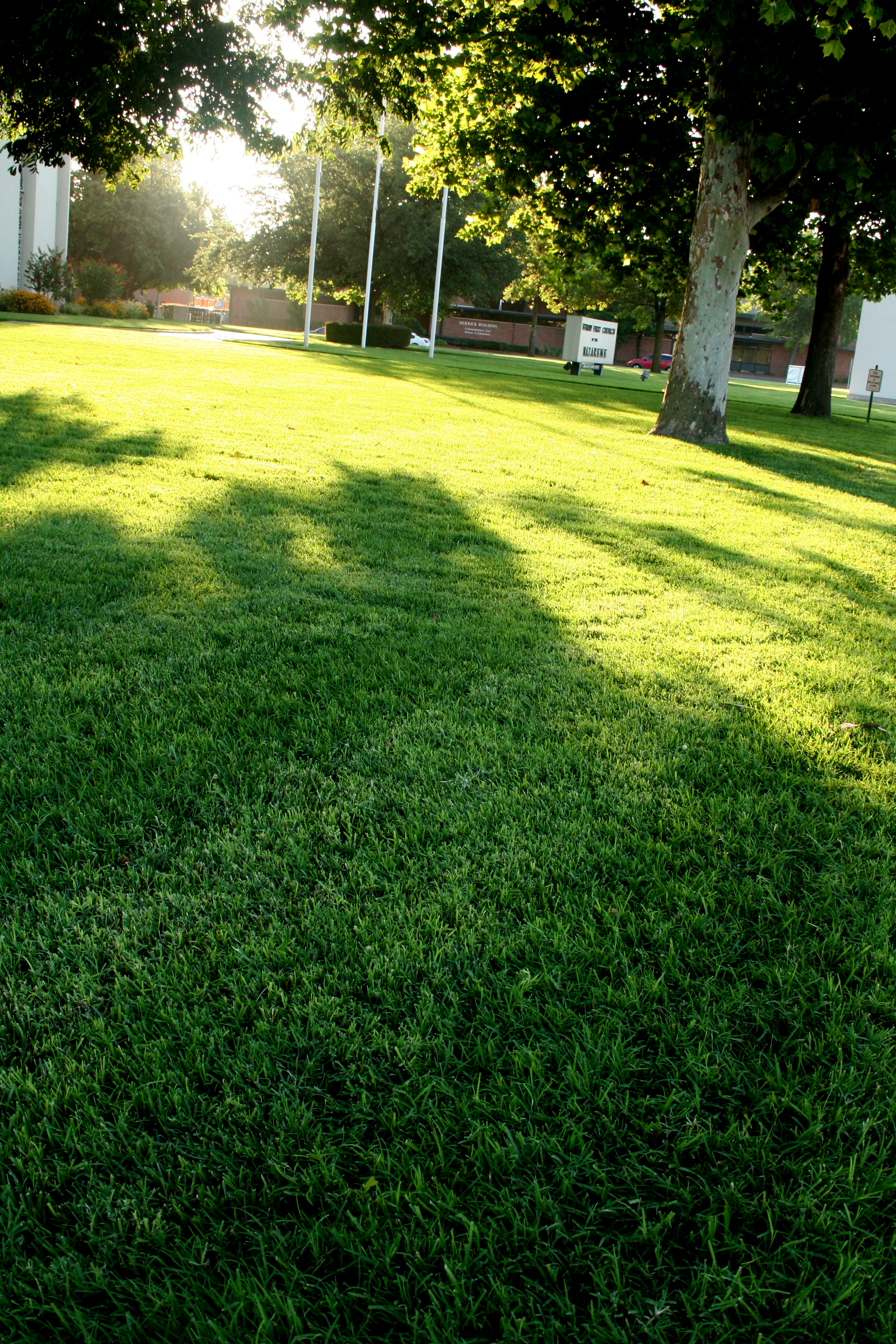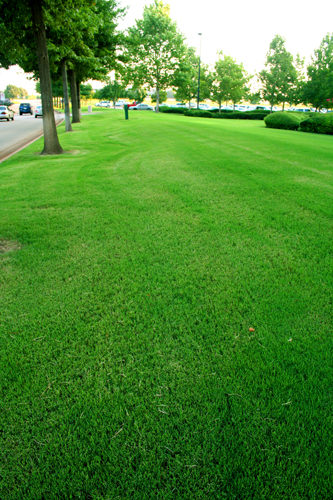What can your lawn do for you?
In the race to reduce carbon output and conserve water, many have forgotten the long list of benefits of a healthy lawn. Concerns over water supplies, herbicides, pollutants, and your carbon footprint have caused some to race toward a more minimalist approach to landscapes and lawns.
Over the past few years the media joined the war against the landscape with articles such as “The Life and Death of the American Lawn. Grasses – green, neatly trimmed, symbols of civic virtue – shaped the national landscape. They have now outlived their purpose.”
One of the hottest trends is the replacement of natural grass with landscape gravel or artificial turf. Both have their place, but not at the expense of a healthy landscape of plants, trees, and turf.
Is it good for the environment when living plants are replaced with artificial materials? Yes, water will be saved. Yes, there will be less fertilizer used. But, is there more to consider?
Can replacing a living plants with artificial materials really be a net positive for the environment?
When it comes to the benefits of turf grass most people don’t give it much thought. The environmental benefits of a healthy lawn are seldom considered. Most would have a hard time answering the question, “What is your lawn doing for you?”
Let’s explore a few reasons why a healthy landscape is important to our environment:
Turfgrass captures carbon.
Healthy lawns absorb carbon dioxide and replace it with oxygen.
The average, managed lawn, captures more carbon than a lawnmower produces. The average lawn captures 300 lbs. of carbon per year and has a net positive impact on our environment.
A 2,500 sq. ft lawn, half the size of the average lawn, provides enough oxygen for a family of four.
What is a managed lawn? A lawn that receives regular mowing, and some fertilizer and weed control applications. Maintaining a healthy turfgrass environment provides us with a critical component of a healthy world – less carbon. An Ohio State study found lawns that received only an occasional mowing and no fertilizer or weed control captured far less carbon.
Maintenance habits have a big influence on whether turfgrass helps or hurts the environment. Lawns cut too short typically create a negative carbon exchange. Weedy lawns, nutrient deficient lawns, and drought stress lawns result in thin lawns that have a negative impact on the environment.
Actively growing and healthy landscapes can provide benefits of heat reduction.
Trees, shrubs, and lawn areas around homes can reduce air temperatures on the average 15 degrees compared to concrete, asphalt or gravel.
Studies estimate that improved planting and maintenance of lawns and landscapes could reduce total US air conditioning requires by 25%. Grass cools the air by absorbing solar radiation and through evapotranspiration.
A healthy turf slows water runoff reducing erosion and therefore reducing sediment build up and improves the quality of streams, ponds, and lakes.
Less runoff increases infiltration of water into the groundwater supply. A dense root system traps and removes pollutants moving through the soil and into the water supply. The natural filtration system of healthy turfgrass improves water quality.
Turfgrass is more effective at stopping erosion than any other plant. Grass naturally slows runoff and allows more water to be absorbed. Also, grass is a natural water purifier.
Lawns are a major component of higher home values.
Smart Money reported consumers value a home with a well maintained lawn and landscape on the average 11.3% over the base value.
Healthy lawns improve air quality by trapping dust and allergens.
Dense turf reduces the blowing of soil particles. Also, it only takes 25 sq. ft. of turfgrass to provide enough oxygen for one adult for one day.
Great lawns benefit the community and human health.
Green areas enhance community pride, provide places for people to come together and promotes outdoor activity. Research shows the result is improved physical and mental health and reduced stress.
The belief that well maintained lawns are an environmental liability are short-sighted. Water concerns are legitimate. Overwatering lawns and excessive use of fertilizers and herbicides drive much of the concern. Education on proper watering, maintenance, fertilizer, and herbicide use is important.
A scientific study “The Role of Turfgrasses in Environmental Protection and Their Benefits to Humans” concluded that there is no valid scientific basis for water restrictions of turfgrass. The report stated, “the main cause for excessive landscape water use in most situations is the human factor.”
James Beard, Professor Emeritus of Texas A&M, said, “The environmental benefits of turfgrass are the most sensible and economically feasible approach to counter the greenhouse effect.”
So, what has your lawn done for you lately? “More than you can imagine!”
Lorne Hall
Hall | Stewart Lawn & Landscape

